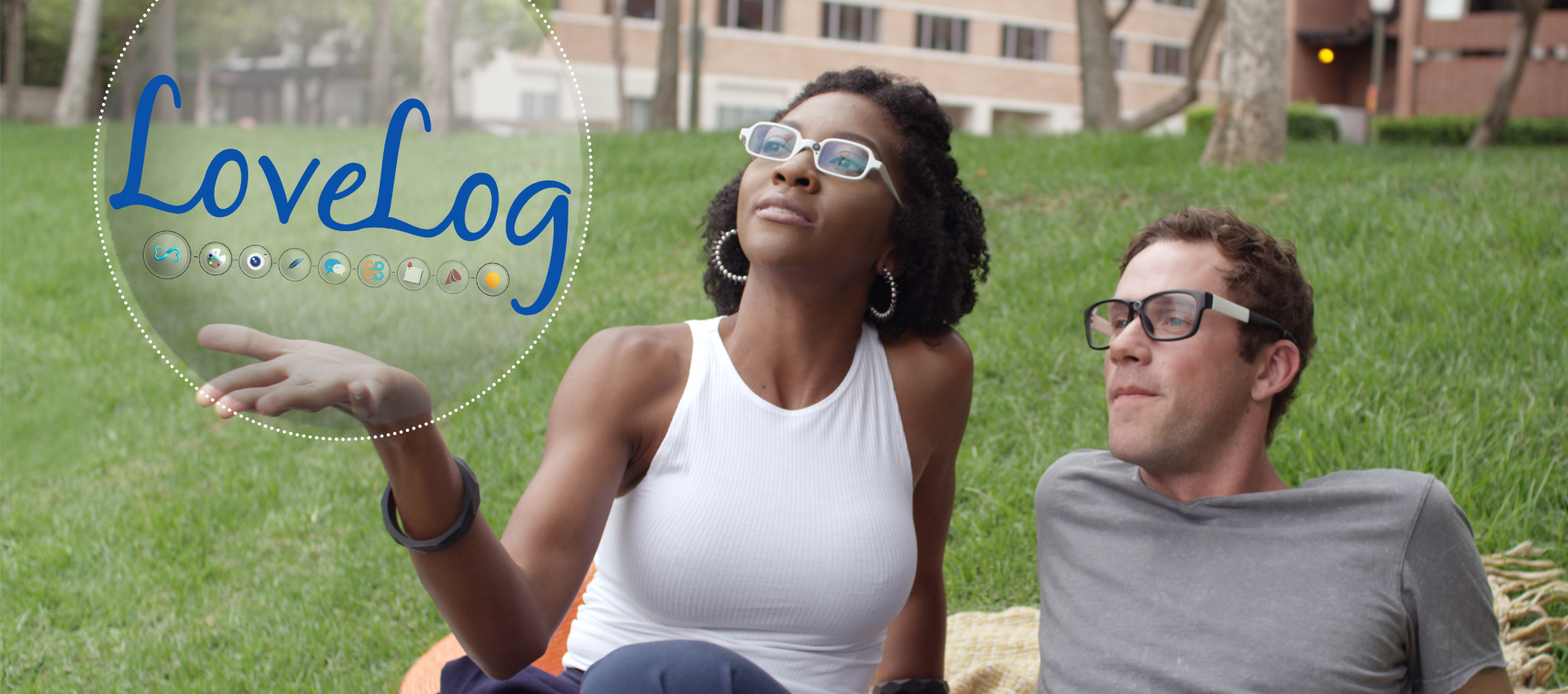Speculative Rituals
Research, design, and media work of Joshua McVeigh-Schultz
LoveLog is a Sloan awarded short film about new opportunities to record our memories colliding with the messy reality of romantic relationships. Lovers Felix and Sadie never take off their augmented reality (AR) glasses and constantly record video of their lives as they tag and catalog their memories using an AR app called LoveLog. The app is touted as a repository for sweet moments and romantic stories, but during a difficult move, they quarrel over petty concerns, each using LoveLog to accuse the other of wrongdoing. While dredging up the past as fodder for their argument, they ultimately find new ways to understand one another.
In an effort to understand how immersive design tools may impact the future of design and creative work, I led a project in USC’s Mobile & Environmental Media Lab in partnership with the Steelcase Workspace Futures group. The research involved fieldwork with VR designers and industrial designers. The insights we gathered helped inspire a series of VR experiments that explored new interfaces and workflows for creative collaboration. In particular, we developed a methodology called immersive design fiction that helped us to reimagine practices of ideation, sketching, modeling, annotation, and review. Immersive design fiction enables interaction designers to go beyond the simple prototyping of interfaces to also model the interaction rituals and surrounding social worlds that might envelope these experiences.
As part of an internship at Microsoft Research New England with Nancy Baym, I studied the experiences of people who use Couple, an app target at romantic partners. I wanted to understand how people come to adapt or invent new social practices in the context of a novel platform. The research culminated publication for the journal Social Media & Society titled “Thinking of You: Vernacular Affordance in the Context of the Microsocial Relationship App, Couple”, where I argued that affordances are not a distinct aspect of a single artifact, but rather are experienced as nested layers at different levels of scale.

LoveLog is a Sloan awarded short film about new opportunities to record our memories colliding with the messy reality of romantic relationships. Lovers Felix and Sadie never take off their augmented reality (AR) glasses and constantly record video of their lives as they tag and catalog their memories using an AR app called LoveLog. The app is touted as a repository for sweet moments and romantic stories, but during a difficult move, they quarrel over petty concerns, each using LoveLog to accuse the other of wrongdoing. While dredging up the past as fodder for their argument, they ultimately find new ways to understand one another.

In an effort to understand how immersive design tools may impact the future of design and creative work, I led a project in USC’s Mobile & Environmental Media Lab in partnership with the Steelcase Workspace Futures group. The research involved fieldwork with VR designers and industrial designers. The insights we gathered helped inspire a series of VR experiments that explored new interfaces and workflows for creative collaboration. In particular, we developed a methodology called immersive design fiction that helped us to reimagine practices of ideation, sketching, modeling, annotation, and review. Immersive design fiction enables interaction designers to go beyond the simple prototyping of interfaces to also model the interaction rituals and surrounding social worlds that might envelope these experiences.

As part of an internship at Microsoft Research New England with Nancy Baym, I studied the experiences of people who use Couple, an app target at romantic partners. I wanted to understand how people come to adapt or invent new social practices in the context of a novel platform. The research culminated publication for the journal Social Media & Society titled “Thinking of You: Vernacular Affordance in the Context of the Microsocial Relationship App, Couple”, where I argued that affordances are not a distinct aspect of a single artifact, but rather are experienced as nested layers at different levels of scale.